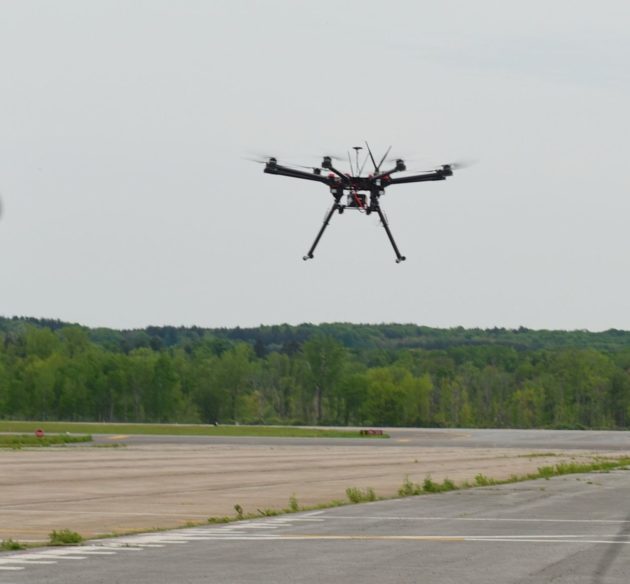
Hundreds of flights have been canceled and tens of thousands of airline passengers have been stranded because of the buzz of unauthorized drones over London’s Gatwick Airport — demonstrating how disruptive a simple aerial strategy can be.
Military forces have been called up to hunt down the elusive drone operator, and the crisis has prompted calls to tighten up flight restrictions near Britain’s airport. But on that score, U.S. airports appear to be in a better position to guard against drone disruption.
British regulations call for a no-drone zone within 1 kilometer (0.6 miles) of an airport’s perimeter, while the Federal Aviation Administration restricts drone flights in a five-mile radius around airports such as Seattle-Tacoma International Airport.
In more sensitive areas, such as the National Capital Region around Ronald Reagan Washington National Airport, restrictions are in force within a much wider radius — ranging from 15 to 30 miles, depending on the type of activity.
Sea-Tac spokesman Perry Cooper told GeekWire that the airport’s operations team hasn’t had any reports of drone incidents, and that it works in collaboration with the FAA on drone monitoring.
The FAA, meanwhile, says that it works with the Department of Homeland Security, the lead agency in drone security issues.
In October, language written into FAA reauthorization legislation gave Homeland Security and the Justice Department the authority to counter the use of drones for “nefarious purposes.”
In a statement, Homeland Security Secretary Kirstjen Nielsen said the legislation will open the way for federal agents to test “truly needed drone-defense technologies,” and will help the U.S. government “identify, track and mitigate weaponized or dangerous unmanned aerial systems in our skies.”
Airports are allowed to deploy drone detection systems, but they’re not allowed to use counter-drone technology. That capability — including the authority to shoot down drones if necessary — is reserved for Homeland Security and the FBI.
Civil-liberties groups voiced concerns this summer while the legislation was being debated. The Electronic Frontier Foundation, for example, warned that the power to down drones would be given to “agencies notorious for their absence of transparency, denying access to journalists, and lack of oversight.”
How would drones be downed? At Gatwick, authorities have reportedly sent in snipers, but there’s a concern that stray bullets could do more harm than good.
In the past, law-enforcement agencies in other parts of the world have tried using specially trained falcons or eagles to nab rogue drones out of the sky — with mixed results.
A British company called OpenWorks Engineering has developed an air-powered gun that deploys a net and a parachute to capture drones, Spider-Man-style.
Boeing has developed an anti-drone laser system, but it’s meant for use on the battlefield rather than near civilian airports. The same goes for Battelle’s DroneDefender, an electronic jamming device that can be aimed at enemy drones.
Closer to home, Utah-based Fortem Technologies has developed an anti-drone drone known as the DroneHunter UAV that’s designed to snare unwelcome drones in nets. This year, Boeing’s venture capital arm participated in a $15 million funding round for Fortem.
Some drones have built-in geofencing to keep them from being operated in no-fly zones. Such technology could be built into the detect-and-avoid radar systems that are under consideration for next-generation drones. Bellevue, Wash.-based Echodyne is one of several companies working on security systems to counter rogue drones.
DroneShield, a company with offices in Australia and Virginia, offers a variety of counter-drone systems — ranging from the DroneGun to the DroneCannon.
In an email to GeekWire, DroneShield CEO Oleg Vornik said “we are seeing numerous regular incidents around airports globally, and it’s unfortunately a matter of time before [there is] substantial loss of life due to a drone incident.”
“We are in discussions with a number of airports today, and look forward to seeing our deployments at airports, for both detection and defeat of rogue drones,” Vornik said.
Are anti-drone systems destined to become part of the routine for flying the not-so-friendly skies? Unfortunately, the Gatwick standoff could well hint at the shape of things to come.
Update for 11:28 p.m. PT Dec. 20: The Associated Press reports that flights have resumed at London’s Gatwick Airport after rogue drones forced a shutdown for more than 24 hours.



